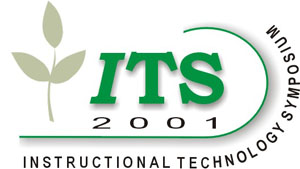Introduction Since their introduction in the mid-1990s, transgenic crops (also known as genetically modified (GM) or genetically engineered crops) have led to significant changes in crop varieties and production practices, especially in North America. Pest and disease resistance have been introduced into many varieties that are currently on the market or under development. Although these new technologies offer benefits in some situations, questions have arisen about their food safety, environmental, and socioeconomic consequences. To meet public information needs in this area, we launched a World Wide Web site in May 2000 entitled "Transgenic Crops: An Introduction and Resource Guide" (http://www.colostate.edu/programs/lifesciences/TransgenicCrops/). Our goal for
this site is to provide balanced information at an introductory level,
and links to other resources on the technology and issues surrounding transgenic
crops. The genesis of the site occurred when a group of high school science
teachers visiting Colorado State University requested help in responding
to their students' questions on GM crops. Perusal of existing web resources
revealed that most sites fell into one of two categories:
Use of the site by educators Although we view this site as appropriate to the general public, it may be especially useful in educational settings, both at the secondary and university levels. Teachers have told us they would use and have used the site as a resource for their students in preparing for discussions, practicing critical thinking, seeking answers to specific questions, and writing reports. Teachers have also used the site to educate themselves on the subject prior to discussing it with their students. To enhance the usefulness of the site for teachers, we plan to develop and post "downloadable" materials for classroom use, such as lesson plans and slide presentations. Notable features of the site (accessible from the menu on the left side of the home page) include
The site has been favorably reviewed in a number of publications, including Science, the Chronicle of Higher Education, Genetic Engineering News, and Environmental Nutrition. During the fall of 2000 the site averaged 200 “hits” per day from unique visitors. Although we do not yet have formal data evaluating the effectiveness of the site, email comments from site visitors (including students, teachers, consultants, and journalists) have been overwhelmingly positive. We were recently awarded a USDA grant to pursue a number of initiatives in agricultural biotechnology education, including expansion and enhancement of the web site. Specific objectives include expanded information and analysis of risks and concerns, development of a Spanish language version of the site (http://www.colostate.edu/programs/lifesciences/TransgenicCrops/index_sp.html), and posting of resources especially targeted to teachers and journalists. Insights For those seeking to develop web sites with similar education goals in mind, we offer the following thoughts: (1) A web site on a technical topic can be developed fairly rapidly through the collaboration of an experienced programmer and a team of professionals providing content. Working on a very part-time basis, we developed our site in about four months, from planning and design through peer review and public announcement. (2) Resources may be available at your institution or elsewhere for help in developing a web site. The services of our programmer (Lacy Fuller) were kindly provided through the CSU Center for Life Sciences, funded in part by the Howard Hughes Medical Institute. As mentioned previously, the animation sequence on genetic engineering was created by colleagues at the University of Nebraska-Lincoln, who agreed to the link with our site. (3) Do not underestimate the time required to keep a web site up to date. For a fast changing field like transgenic crops, we have found it necessary to update the site at least weekly. (4) Actively seek review and critique of your web site. We have benefited from many suggestions for making the site more accurate, informative, and user-friendly. We welcome your comments and suggestions for improving this site.
|
